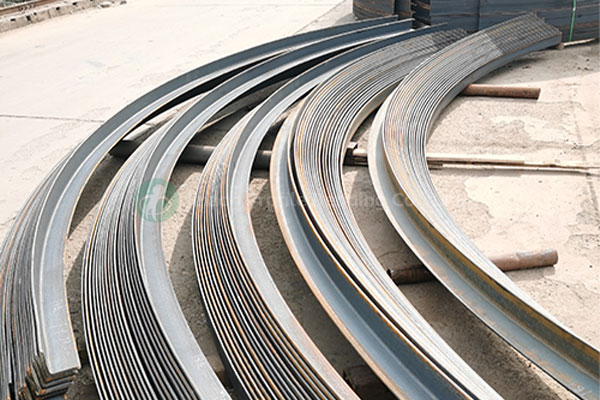Redefining the construction industry with innovative solutions, cuttin-edge technology and sustainable practices
Profile Bending 2025-07-28
The bending process is a fundamental manufacturing technique used in various industries, from automotive to aerospace, construction to electronics. As materials continue to evolve and the demand for precision increases, optimizing the bending process for greater flexibility and accuracy has become crucial.
Bending is a deformation process that involves applying force to a material, causing it to change shape without breaking. This process can be accomplished through various methods, including air bending, bottoming, and coining, each with its unique advantages and applications. The choice of bending method often depends on the material type, thickness, bend radius, and desired precision.
1.Material Selection: The properties of the material being bent significantly influence the outcome of the bending process. Metals such as aluminum, steel, and copper have different mechanical properties, affecting their ability to bend without cracking or deforming. Understanding the yield strength, ductility, and elasticity of the material is essential for predicting how it will behave during bending.
2.Bend Radius: The bend radius is a critical factor in the bending process. A smaller bend radius increases stress on the material, which can lead to cracking or deformation. Designers must consider the minimum bend radius for their chosen material to ensure the integrity of the final product.
3.Thickness: The thickness of the material also plays a crucial role in bending. Thicker materials require more force to bend and may have limitations on the minimum bend radius. Conversely, thinner materials are more susceptible to deformation and must be handled with care to avoid unintended bending or warping.
4.Bending Method: The chosen bending method can impact both precision and flexibility. For example, air bending allows for the adjustment of the bend angle without needing to change the tooling, making it a flexible option. In contrast, coining provides high precision but limits flexibility due to the specific tooling required.

To achieve greater flexibility and precision in the bending process, designers can implement several strategies:
1.CAD Software and Simulation: Utilizing computer-aided design (CAD) software with bending simulation capabilities allows designers to visualize the bending process before production. This enables them to identify potential issues, such as excessive stress or incorrect bend radii, and make necessary adjustments to the design.
2.Design for Manufacturability (DFM): Applying DFM principles encourages designers to consider the manufacturing process during the design phase. This includes selecting appropriate materials, optimizing the geometry for bending, and ensuring that the part can be produced with minimal waste and effort.
3.Incorporating Tolerances: Defining appropriate tolerances in the design phase ensures that the final product meets the required specifications. Understanding how bending affects dimensions is crucial, as the material can spring back after bending. Designers should account for this springback effect when specifying tolerances.
4.Modular Design: Implementing a modular design approach can enhance flexibility. By designing components that can be easily modified or combined, manufacturers can adapt to changing requirements without needing to redesign entire assemblies. This approach also allows for easier repairs and replacements.
5.Tooling Considerations: The choice of tooling used in the bending process can have a significant impact on precision and flexibility. Investing in high-quality dies and tools designed specifically for the material and desired bend characteristics can improve outcomes. Additionally, adjustable tooling allows for quick changes between different part designs.
6.Continuous Improvement and Feedback: Establishing a culture of continuous improvement within the manufacturing process can lead to better bending outcomes. Collecting data on production performance, quality, and failures enables manufacturers to identify areas for improvement and implement changes accordingly.
The bending process is a vital aspect of modern manufacturing, requiring careful consideration of design, materials, and methods to achieve optimal results. By understanding the factors that influence bending performance and implementing strategies to enhance flexibility and precision, designers and manufacturers can meet the demands of an increasingly competitive market. As industries continue to evolve, optimizing the bending process will remain essential in delivering high-quality products that meet the needs of consumers and businesses alike.